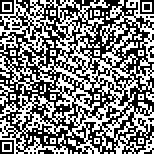| 摘要: |
| [摘要] 目的 分析体外膜肺氧合(ECMO)辅助心肺复苏(CPR)救治儿童心搏骤停(CA)的临床效果。方法 回顾性分析2015年12月至2022年12月在上海市儿童医院儿童重症监护室(PICU)因CA接受ECMO辅助CPR治疗的8例患儿的临床资料,包括原发疾病、CPR前儿童序贯器官衰竭评估(pSOFA)评分和血管活性药物评分(VIS)、CPR至ECMO转流时间间隔、ECMO置管方式、ECMO运行时长、ECMO撤离成功率、出院存活率以及ECMO转流前和转流24 h后实验室检查指标等。结果 8例接受ECMO辅助CPR治疗的CA患儿中,死亡5例,存活3例,ECMO撤离成功率和出院存活率均为37.50%(3/8)。原发疾病7例为暴发性心肌炎,1例为脓毒性休克。3例患儿为右侧颈内静脉/颈动脉切开置管,5例患儿为股静脉/股动脉置管。ECMO运行中位时长为50.50(3.00,210.00)h,CPR至ECMO转流最短时间间隔为18 min,最长为150 min。转流后6例患儿予床旁连续性肾脏替代治疗(CRRT)辅助治疗,4例行左心减压。ECMO相关并发症包括出血8例,弥散性血管内凝血(DIC)6例,溶血3例,血栓1例,肢端缺血1例,神经系统损伤1例。ECMO转流24 h后患儿血肌酐及肝酶学指标均较转流前显著升高(P<0.05)。与死亡组比较,存活组患儿ECMO转流24 h后乳酸(Lac)水平显著下降(P<0.05)。结论 体外心肺复苏(ECPR)患儿的出院存活率仍较低,出凝血事件发生率高,ECMO转流后24 h Lac水平迅速下降可能提示预后良好。 |
| 关键词: 体外膜肺氧合 心肺复苏 心搏骤停 儿童 |
| DOI:10.3969/j.issn.1674-3806.2023.07.04 |
| 分类号:R 654.1 |
| 基金项目:国家重点研发计划课题(编号:2021YFC2701805,2021YFC2701704);上海市科学技术委员会科技计划项目(编号:21Y11902600);国家自然科学基金资助项目(编号:82100085) |
|
| A clinical analysis of extracorporeal membrane oxygenation-assisted cardiopulmonary resuscitation in treatment of children with cardiac arrest |
|
REN Yu-qian, CUI Yun, ZHOU Yi-ping, et al.
|
|
Department of Critical Care Medicine, Shanghai Children′s Hospital, School of Medicine, Shanghai Jiao Tong University, Shanghai 200062, China
|
| Abstract: |
| [Abstract] Objective To analyze the clinical effectiveness of extracorporeal membrane oxygenation(ECMO)-assisted cardiopulmonary resuscitation(CPR) in the treatment of children with cardiac arrest(CA). Methods The clinical data of 8 pediatric patients who were admitted to the Pediatric Intensive Care Unit(PICU) of Shanghai Children′s Hospital and received ECMO-assisted CPR treatment due to CA from December 2015 to December 2022 were retrospectively analyzed. These clinical data included primary diseases, pre-CPR Pediatric Sequential Organ Failure Assessment(pSOFA) score and Vasoactive Inotropic Score(VIS), CPR to ECMO diversion time, ECMO placement method, ECMO running time, success rate of ECMO weaning, survival rate at discharge, and laboratory indicators before ECMO diversion and 24 hours after ECMO diversion. Results Among the 8 pediatric patients with CA who received ECMO-assisted CPR treatment, 5 cases died and 3 cases survived. The success rate of ECMO weaning and the survival rate at discharge were both 37.50%(3/8). Among the patients with primary diseases, 7 cases suffered from fulminant myocarditis and 1 case suffered from septic shock. Right internal jugular vein/carotid artery dissection was performed in 3 cases, and femoral vein/femoral artery catheterization was performed in 5 cases. The median ECMO running time was 50.50(3.00, 210.00)hours. The shortest interval between CPR and ECMO diversion was 18 minutes and the longest interval was 150 minutes. After diversion, 6 cases received bedside continuous renal replacement therapy(CRRT) adjuvant treatment, and 4 cases underwent left ventricular decompression during operation. ECMO-related complications included bleeding(8 cases), disseminated intravascular coagulation(DIC)(6 cases), hemolysis(3 cases), thrombosis(1 case), limb ischemic necrosis(1 case), and neurological injury(1 case). The levels of serum creatinine(Scr) and serum liver enzymes[including alanine aminotransferase(ALT) and aspartate aminotransferase(AST)] were significantly higher in the pediatric patients 24 hours after ECMO diversion than those in the pediatric patients before ECMO diversion(P<0.05). The level of lactic acid(Lac) in the survival group was significantly lower than that in the death group 24 hours after ECMO diversion(P<0.05). Conclusion The pediatric patients with ECPR still have a lower survival rate at discharge from the hospital and a high rate of bleeding and coagulation events, and a rapid decrease in Lac level 24 hours after ECMO diversion may indicate a favorable prognosis. |
| Key words: Extracorporeal membrane oxygenation(ECMO) Cardiopulmonary resuscitation Cardiac arrest Children |

